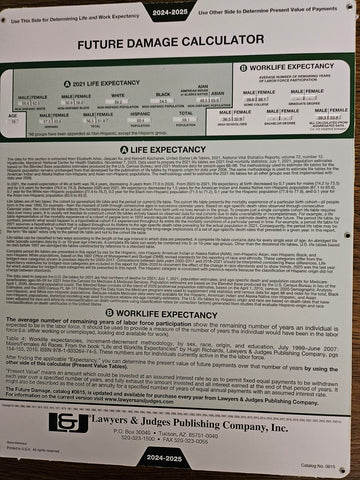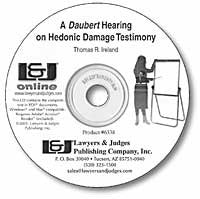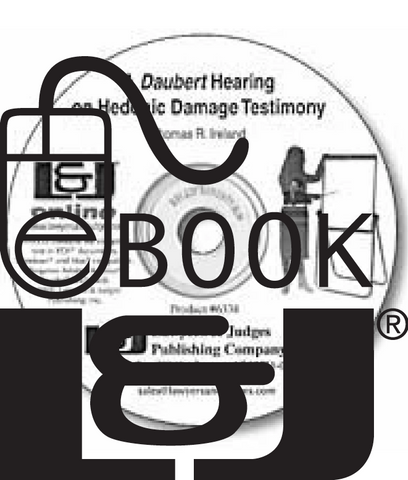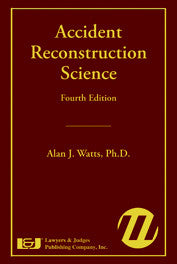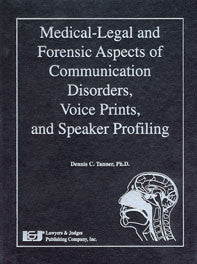
Medical-Legal and Forensic Aspects of Communication Disorders, Voice Prints, & Speaker Profiling
- Author: Dennis C. Tanner
- ISBN 10: 1-933264-13-6
- ISBN 13: 978-1-933264-13-4
- Copyright Date Ed: February 1, 2007
- Pages: 347 pages
- Binding Information: Hardcover
- Size: 8.5 ✕ 11 Inches (US)
Medical-Legal and Forensic Aspects of Communication Disorders, Voice Prints, and Speaker Profiling is your comprehensive guide to this complicated area. This four part book is perhaps one of the most complete on this topic.
Part I reviews the discipline of communication sciences and disorders and discusses the research methodology used to expand its knowledge base.
Part II addresses issues related to medical malpractice and other medical-legal areas for all of the major communication and swallowing disorders. This section includes legal references and case studies.
Part III of this volume examines spectrographic voice identification, the use of voice prints to identify or confirm the identities of speakers and suspects. Included in this section is a discussion of the acoustics of speech, a comprehensive review of phonetics, and voice prints showing and describing their salient forensic features.
Part IV addresses the evolving concept of speaker profiling, the "facts" that can be concluded, and the "conjecture" drawn about what a speaker says and how he or she says it. Chapters in this section address speaker profiling principles, accent and dialect, speech patterns of intoxicated persons, speaker profiling during forensic interviews and interrogations, profiling persons with communication disorders, and instrumental voice stress analysis.
This volume is designed to be the most authoritative, comprehensive text on these subjects, and a valuable resource for lawyers, judges, and professionals from law enforcement, homeland security, and intelligence agencies.
Topics Include:
- Overview of communication science research
- Common communication disorders
- Medical malpractice
- Spectrographic voice identification
- Voice prints and confirming identity
- Acoustics of speech
- Phonetics
- Speaker profiling principles
- Accents
- Dialects
- Use of speaker profiling in interviews and interrogations
- Instrumental voice stress analysis
- Speech of intoxicated persons
- Profiling individuals with communication disorders
This book is also available as an E-book. Click here to purchase and download:
Table of Contents
Part One: The Discipline of Communication Sciences and Disorders
Chapter 1. The Scope of The Medical-Legal and Forensic Aspects of Communication, Disorders, Voice Prints, and Speaker Profiling
1.1 Chapter Preview
1.2 Communication in the 21st Century
1.3 Overview of The Medical-Legal and Forensic Aspects of Communication Disorders, Voice Prints, and Speaker Profiling
1.4 Organization of The Medical-Legal and Forensic Aspects of Communication Disorders, Voice Prints, and Speaker Profiling
Chapter 2. A Brief History of the Study of Human Communication and Its Disorders
2.1 Chapter Preview
2.2 Historical Overview of Communication and Its Disorders
2.3 The Brain-Mind Leap
2.4 Communication and the Brain Localization Controversy
2.5 The Language-Thought Controversy
2.6 Social Status of People with Communication Disorders
2.7 Social Inclusion through Accommodation
Chapter 3. The Communication Sciences
3.1 Chapter Preview
3.2 Communication Sciences and Speech-Language Pathology and Audiology
3.3 The Speech, Language, and Hearing Sciences
Chapter 4. Speech-Language Pathology and Audiology
4.1 Chapter Preview
4.2 Scope of Practice for Speech-Language Pathologists
4.3 Scope of Practice for Audiologists
4.4 Educational and Clinical Requirements for Speech-Language Pathologists and Audiologists
4.5 Educational and Clinical Requirements for Assistants and Support Personnel
4.6 Medical and Educational Specialties Involved in Speech-Language Pathology and Audiology
Chapter 5. Economics, Prevalence, Incidence, and Diagnostic Categories of Communication Disorders
5.1 Chapter Preview
5.2 Economics of Communication Disorders
5.3 Prevalence and Incidence of Communication Disorders
5.4 Categories of Communication Disorders
5.5 Neurogenic Communication Disorders
5.6 Communication Disorders Resulting from Head and Neck Injuries
5.7 Voice and Resonance Disorders
5.8 Childhood Communication Disorders
5.9 Communication Disorders and Dementia
5.10 Hearing Loss and Deafness
5.11 Dysphagia
5.12 Summary
Chapter 6. Research Methodology in Communication Sciences and Disorders
6.1 Chapter Preview
6.2 Evidence-Based Clinical Practices in Speech-Language Pathology and Audiology
6.3 Pure and Applied Research in Communication Sciences and Disorders
6.4 Types of Research in Communication Sciences and Disorders
6.5 Experimental Research Design
6.6 Review of Literature
6.7 Definition of Terms
6.8 Research Questions and Hypotheses Testing
6.9 Subjects
6.10 Control and Experimental Groups
6.11 Results and Conclusions
6.12 Suggestions for Future Research
6.13 Evaluating Empirical Research in Communication Sciences and Disorders
6.14 Peer Review of Scientific Research
6.15 Summary
Chapter 7. Professional Speech and Hearing Associations
7.1 Chapter Preview
7.2 International Speech and Hearing Professional Associations
7.3 The American Academy of Audiology
7.4 American Academy of Private Practice in Speech Pathology and Audiology
7.5 The American Speech-Language-Hearing Association
7.6 The Code of Ethics of the American Speech-Language-Hearing Association
7.7 Student, State, and Local Professional Associations
Part Two: Medical-Legal and Forensic Aspects of Speech-Language Pathology and Audiology
Chapter 8. The Medical-Legal and Forensic Aspects of Dysphagia (Swallowing Disorders)
8.1 Chapter Preview
8.2 Overview of Dysphagia Medical Malpractice Litigation
8.3 Incidence and Prevalence of Dysphagia
8.4 Defining Dysphagia
8.5 The Dysphagia Management Team
8.6 Chewing, Swallowing, and Speech
8.7 The Normal Swallow
8.8 Neurology of Chewing and Swallowing
8.9 Geriatric and Pediatric Dysphagia
8.10 Tracheotomies, Feeding Tubes, Intubation, Ventilation Devices
8.11 The Dysphagia Evaluation
8.12 Review of Social and Medical History
8.13 Appetite History
8.14 Clinical/Bedside Assessment of Swallowing
8.15 Oral Stage
8.16 Pharyngeal Stage
8.17 Laryngeal-Esophageal Stage
8.18 The Dynamic Swallow
8.19 Clinical Indicators for Radiologic and Instrumental Assessment of Dysphagia
8.20 The Treatment of Dysphagia
8.21 Dysphagia Management Malpractice Litigation and the Expert Witness
8.22 Dysphagia Management Malpractice Litigation and Clinical Documentation
8.23 Dysphagia Management Malpractice Litigation and Clinician Proficiency
8.24 Dysphagia Management Malpractice Litigation and Adequacy of Professional Communication
8.25 Dysphagia Management Malpractice Litigation and Patient Quality of Life
8.26 Case Studies in Dysphagia Malpractice Litigation
Chapter 9. The Medical-Legal and Forensic Aspects of Neurogenic Communication Disorders
9.1 Chapter Preview
9.2 Overview of Neurogenic Communication Disorders Litigation Issues
9.3 Etiology of Neurogenic Communication Disorders
9.4 Aphasia and Motor Speech Disorders
9.5 Psychological Concomitants of Neurogenic Communication Disorders
9.6 Neurogenic Communication Disorders Malpractice Litigation and Efficacy of Treatment
9.7 Neurogenic Communication Disorders Malpractice Litigation and Evaluation Philosophy
9.8 Neurogenic Communication Disorders and Malingering
9.9 Neurogenic Communication Disorders Malpractice Litigation: Assessing Standards of Care
9.10 Neurogenic Communication Disorders Malpractice Litigation: Assessing Quality of Life
9.11 Issues in Neurogenic Communication Disorders Litigation: Disability Determination
9.12 Issues in Neurogenic Communication Disorders Litigation: Determining Mental Competence
9.13 Case Study in Neurogenic Communication Disorders Litigation: Mental Competence Determination
Chapter 10. Medical-Legal and Forensic Aspects of Communication Disorders Resulting from Traumatic Brain Injury
10.1 Chapter Preview
10.2 Traumatic Brain Injury As a Special Etiology of Neurogenic Communication Disorders
10.3 Incidence, Prevalence, and Economics of Traumatic Brain Injury
10.4 The Traumatically Brain-Injured Person
10.5 The Mechanics of Traumatic Brain Injuries
10.6 Traumatic Brain Injury, Consciousness, and Coma
10.7 Traumatic Brain Injury and Disorientation
10.8 Accurate Diagnosis of Disorientation in Aphasic Patients
10.9 Retrograde and Anterograde Amnesia
10.10 Components of Memory
10.11 Posttraumatic Amnesia and Loss of Consciousness As Indicators of Severity of Traumatic Brain Injury
10.12 Personality Changes, Behavioral Problems, and Metacognition
10.13 Posttraumatic Psychosis
10.14 Classifying Traumatically Induced Neurogenic Communication Disorders
10.15 Human Communication: Brain Hemisphere and Lobe Localization Generalities
10.16 Pediatric Traumatic Brain Injury
10.17 Traumatic Brain Injuries, Hearing Loss, and Deafness
10.18 Traumatic Brain Injury and Dysphagia
10.19 Rehabilitation of the Head-Injured Person
10.20 Traumatic Brain Injury Litigation: Determining Current and Retrospective Mental Competence
10.21 Traumatic Brain Injury, Vocational Rehabilitation, Antidiscrimination, and Insurance Social Welfare Determination and Compensation
10.22 Traumatic Brain Injury and Malingering
10.23 Case Study in Traumatic Brain Injury Litigation
10.24 Chapter Summary
Chapter 11. Medical-Legal and Forensic Aspects of Voice and Resonance Disorders
11.1 Chapter Preview
11.2 The Sound-Source Resonating System
11.3 Historical Perspectives
11.4 Respiration and Voice Production
11.5 The Anatomy, Physiology, Neurology, and Physics of Voice Production
11.6 Cleft Lip and Palate
11.7 Cancer of the Larynx
11.8 Vocal Fold Paralysis
11.9 Disorders Related to Vocal Strain and Abuse
11.10 Psychogenic Voice Disorders
11.11 Voice Disorders Litigation and Malingering
11.12 Voice Disorders Malpractice Litigation and Clinician Proficiency
11.13 Voice Disorders, Vocational Rehabilitation, Antidiscrimination, and Insurance-Social Welfare Determination and Compensation Issues
11.14 Issues in Orofacial Anomalies Litigation
11.15 Case Study Involving a Voice Disorder Resulting from Burn Injuries
11.16 Chapter Summary
Chapter 12. Medical-Legal and Forensic Aspects of Childhood Communication Disorders
12.1 Chapter Preview
12.2 The Primary Childhood Communication Disorders
12.3 Childhood Language Delay and Disorders
12.4 Language Development
12.5 Mental Impairment-Mental Retardation
12.6 Language Testing
12.7 Language Delay and Environmental Depravation
12.8 Language and Idioglossia
12.9 Late Talkers
12.10 Language Disorders and Learning Disabilities
12.11 Multiple Disabilities and Pervasive Developmental Disorders
12.12 Language Disorders, Behavioral Difficulties, and School Violence
12.13 Articulation and Phonological Disorders
12.14 Stuttering
12.15 The Individuals with Disabilities Education Act (IDEA)
12.16 Disputes, Mediation, and Due Process
12.17 Stuttering Misdiagnosis
12.18 A Case Study of Alleged Sexual Harassment and Stuttering
12.19 Case Study in Childhood Language Disorders Litigation
12.20 Chapter Summary
Chapter 13. Medical-Legal and Forensic Aspects of Communication Disorders Resulting from Dementia
13.1 Chapter Preview
13.2 Reversible and Irreversible Dementia
13.3 Communication Disorders in Multiple-Infarct-Induced Dementia
13.4 Communication Disorders in Alzheimer’s-Disease-Induced Dementia
13.5 Verbal Manifestations of Dementia
13.6 Evaluating and Treating Communication and Swallowing Disorders in Dementia Patients
13.7 Dementia and Dysphagia
13.8 Dementia and Determining Veracity of Statements
13.9 Dementia, Communication Disorders, and Mental Competence
13.10 Case Study in Dementia-Induced Dyscalculia
Chapter 14. Medical-Legal and Forensic Aspects of Hearing Loss and Deafness
14.1 Chapter Preview
14.2 Hearing, Hard-of-Hearing, Deafness, and Audiology
14.3 Survival and Human Hearing
14.4 Anatomy and Physiology of the Hearing Mechanism
14.5 Categories of Hearing Loss
14.6 Hearing Screening and Testing
14.7 Aural Habilitation and Rehabilitation
14.8 Deafness, Hearing Loss, and Mental Impairment-Mental Retardation Misdiagnosis
14.9 Calibration of Audiological Instruments and Tester Competency
14.10 Hearing Aid Sales and Conflicts of Interest
14.11 Deafness and the Oralist-Manualist Controversy
14.12 Deafness, Hearing Loss, and Malingering
14.13 A Case Study Hysterical Deafness
14.14 Chapter Summary
Part Three: The Forensic Aspects of Voice Prints
Chapter 15. Speech Production and Phonetics
15.1 Chapter Preview
15.2 Speech Communication
15.3 Motor Speech Production
15.4 Respiration for Speech Purposes
15.5 Phonation
15.7 Speech Resonance
15.8 Prosody
15.9 International Phonetic Alphabet and Phonetic Transcription
15.10 English Consonants
15.11 English Vowels
15.12 Summary
Chapter 16. The Acoustic Foundations to Voice Prints
16.1 Chapter Preview
16.2 Speaker Recognition
16.3 Speech Analysis and Synthesis
16.4 Fourier’s Law
16.5 Acoustic Energy
16.6 Sound Waves
16.7 Frequency of Vibration and Pitch
16.8 Amplitude of Vibration and Loudness
16.9 Wavelength
16.10 Sound Pressure
16.11 Simple Harmonic Motion, Sinusoidal and Complex Waves
16.12 Resonance
16.13 Periodic and Aperiodic Sound Waves
16.14 Voice Onset Time
16.15 Chapter Summary
Chapter 17. The Voice Print and Speaker Identification
17.1 Chapter Preview
17.2 Salient Features of the Sound Spectrogram
17.3 Transitioned Speech Segments and Automatic Speech
17.4 Subjective and Objective Methods of Voice Identification (The Tosi Model)
17.5 Visual Detection of Speech Patterns
17.6 Semiautomatic and Automatic Voice Identification
17.7 Admissibility of Voice Prints
Part Four: Speaker Profiling
Chapter 18. The Art and Science of Speaker Profiling
18.1 Chapter Preview
18.2 The Concept of Speaker Profiling
18.3 Deductive Logic and Intuitive Speaker Profiling
A. Deductive Reasoning
B. Scientifically Based Speaker Profiling
C. Inductive Reasoning
Chapter 19. Speaker Profiling Using Accent and Dialect
19.1 Chapter Preview
19.2 Speaker Profiling Using Accent and Dialect is Not Racial Profiling
19.3 Accent and Dialect
19.4 Regional Accent and Dialectical Variations in the United States
19.5 Accent, Dialect, and Vowels
19.6 Accent, Dialect, Consonants, and Phonological Rules
19.7 Accent, Dialect, Word Usage, and Grammatical Structures
19.8 Accent, Dialect, and Socioeconomic Status
19.9 Accent, Dialect, and Terrorism
19.10 Automatic Language Accent and Dialect Profiling
19.11 Summary
Chapter 20. Speaker Profiling and Intoxication
20.1 Chapter Preview
20.2 The Forensic Aspects of Intoxication and Speech Patterns
20.3 Intoxication, Neurological Organization, and Motor Speech Production
20.4 Disruptive Effects of Anxiety on the Speech Production of Intoxicated Persons
20.5 Intoxicants and Motor Speech Programming
20.6 Intoxicants and Motor Speech Coordination
20.7 Intoxicants and Automatic Motor Speech
20.8 The Language of Intoxication
20.9 Neurological Diseases and Disorders Resembling Intoxication
20.10 Speech and Language Factors to Consider When Distinguishing Intoxication from Neurological Diseases and Disorders
Chapter 21. Speaker Profiling, Forensic Interviewing, and Interrogation
21.1 Chapter Preview
21.2 Speech: The Ego on Display
21.3 Principles of Speaker Profiling
21.4 The Art of Listening in Speaker Profiling
21.5 Speaker Profiling Using Speech Disfluencies
21.6 Speaker Profiling Conjecture: Disfluencies
21.7 Speaker Profiling Using Rate-of-Speech
21.8 Speaker Profiling Conjecture: Rate-of-Speech
21.9 Speaker Profiling Using the Voice
21.10 Speaker Profiling Conjecture: The Voice
21.11 Speaker Profiling: Word Choice and Grammatical Construction
21.12 Speaker Profiling Conjecture: Word Choice and Grammatical Construction
21.13 Speaker Profiling Using Nonverbal Communication Cues
Chapter 19. Speaker Profiling Using Accent and Dialect
19.1 Chapter Preview
19.2 Speaker Profiling Using Accent and Dialect is Not Racial Profiling
19.3 Accent and Dialect
19.4 Regional Accent and Dialectical Variations in the United States
19.5 Accent, Dialect, and Vowels
19.6 Accent, Dialect, Consonants, and Phonological Rules
19.7 Accent, Dialect, Word Usage, and Grammatical Structures
19.8 Accent, Dialect, and Socioeconomic Status
19.9 Accent, Dialect, and Terrorism
19.10 Automatic Language Accent and Dialect Profiling
Chapter 20. Speaker Profiling and Intoxication
20.1 Chapter Preview
20.2 The Forensic Aspects of Intoxication and Speech Patterns
20.3 Intoxication, Neurological Organization, and Motor Speech Production
20.4 Disruptive Effects of Anxiety on the Speech Production of Intoxicated Persons
20.5 Intoxicants and Motor Speech Programming
20.6 Intoxicants and Motor Speech Coordination
20.7 Intoxicants and Automatic Motor Speech
20.8 The Language of Intoxication
20.9 Neurological Diseases and Disorders Resembling Intoxication
20.10 Speech and Language Factors to Consider When Distinguishing Intoxication from Neurological Diseases and Disorders
Chapter 21. Speaker Profiling, Forensic Interviewing, and Interrogation
21.1 Chapter Preview
21.2 Speech: The Ego on Display
21.3 Principles of Speaker Profiling
21.4 The Art of Listening in Speaker Profiling
21.5 Speaker Profiling Using Speech Disfluencies
21.6 Speaker Profiling Conjecture: Disfluencies
21.7 Speaker Profiling Using Rate-of-Speech
21.8 Speaker Profiling Conjecture: Rate-of-Speech
21.9 Speaker Profiling Using the Voice
21.10 Speaker Profiling Conjecture: The Voice
21.11 Speaker Profiling: Word Choice and Grammatical Construction
21.12 Speaker Profiling Conjecture: Word Choice and Grammatical Construction
21.13 Speaker Profiling Using Nonverbal Communication Cues
Appendices
Appendix A. Quick Assessment Series for Neurogenic Communication Disorders: Aphasia, Apraxia of Speech, Dysarthria
Appendix B. Quick Assessment for Dysphagia
Appendix C. The Cognitive, Linguistic and Social-Communicative Scales (2nd ed.)

